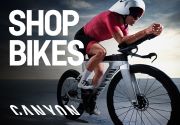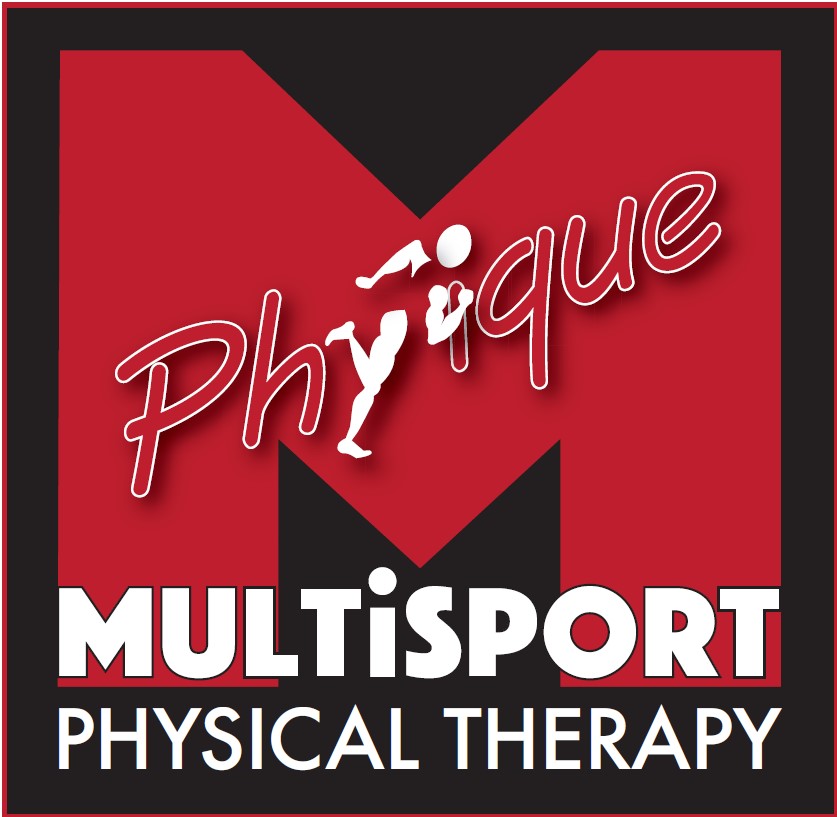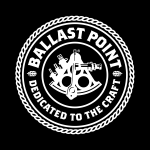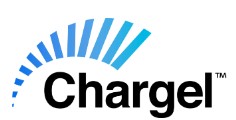Andy Bailey
TCSD Conversation by Craig Zelent
 I had the pleasure recently of talking triathlon with long time TCSD member and friend, Andy Bailey. I am 100% confident you will enjoy getting to know this absolutely great guy.
I had the pleasure recently of talking triathlon with long time TCSD member and friend, Andy Bailey. I am 100% confident you will enjoy getting to know this absolutely great guy.
Craig: What was your athletic background before getting into triathlon?
Andy: I grew up in Newport Beach and played beach volleyball and surfed the infamous Wedge. I ran cross country and track in high school. While in college I played intramural sports. The first few years after graduation from college I played softball on a team from work. I started running again in 1964 and continued playing softball.
In 1977 I saw a race flyer advertising the Dana Dips Seven Mile Run sponsored by the Dana Point Athletic Club. It was not a beach run as I had thought and afterward I asked the race director what I needed to do to run faster. He said I should run more hills and invited me to join his South Coast Road Runners Club.
In 1981 I read an article in Runner’s World Magazine on how to run a marathon on a base of 20 miles a week. A few months later I learned that Club Inside Track in Ventura was organizing a bus trip to run the Avenue of the Giants Marathon near Eureka. I sent in my money and drove after work to Ventura to catch the bus. It was a beautiful course and I finished in under four hours. I could hardly wait until my next race.
About this time I met a group of runners from the Orange County Track Club who were winning a lot of the local races. I joined the club and started interval training with them at Orange Coast College. The next few years my wife, Jeri, and I planned our vacations around various marathons. Some of my favorite marathons were Honolulu, New York, San Francisco. My best marathon was Montreal where I ran just under 3:30. Not quite good enough to qualify for Boston.
Craig: What chain of events led you to do your first triathlon?
Andy: In the mid 1980’s I started cycling and swimming after having some running related issues. The World Duathlon Championship was held at the Desert Princess Hotel in Cathedral City in November 1989. While relaxing in the Hot Tub I struck up a conversation with TCSD members Dave Krosch and Bob Doyle. They talked about the club and encouraged me to come down and do a club race.
Jack Caress, Race Director, and a couple of his Ironman friends opened a triathlon related bike shop in the Market Place near UCI. The wife of one of the mechanics was an Ironman finisher and she had organized a training group which I joined. The next thing I knew I was jumping into some of the shorter distance triathlons. In 1990 I got a second place trophy in the 50-54 age group at the Bud Light Tinsel Triathlon.
Craig: How did you lose your leg?
Andy: Due to a freak accident on 12/12/06 while washing my car in my driveway, a laundry delivery van hit my car which in turn hit me and sent me flying downhill about 12 feet landing under my neighbor’s carport. I sustained a severe injury to my right ankle. The paramedics felt I was lucky to be alive and this was the result of my many years of training and doing triathlons.
I was given little hope by the doctors that I would ever compete in sports again. I took a chance by having my ankle fused and two plastic surgeons worked together for eight hours to take the Latissimus Dorsi muscle from my left side and transplant it to my right leg to make a muscle flap so that I might be able to compete again. After being in the hospital for seven weeks I was discharged home with a walker, pain pills and antibiotics. For the first month I was a prisoner in our master bedroom except to leave for doctor appointments. It was fun sliding down the stairs on my butt.
With the help of a physical therapist I graduated from a walker to crutches. Being on crutches made it very hard for me to maneuver around our tri level house. Each time I went up and down the stairs Jeri had to hold on to the safety belt to make sure I didn’t fall. The activities of daily living were challenging because of my swollen, painful foot. It was frustrating not to be able to do things on my own or taking a lot of energy just to do the everyday tasks of living. I was constantly having to deal with the infection (MRSA). I had several surgeries during the year and wound care was a daily chore.
Craig: At what point did you "turn the corner" and start to seriously consider amputation?
Andy: July 2007 I changed doctors and after examining and taking x-rays I was told that the ankle was not healing. I was shocked when he next said I should consider amputation. I spent the next several months consulting other doctors. The answer was the same. If I ever wanted a life without crutches, pain and antibiotics I should have the amputation.
On the 10th Anniversary of the Pacific Coast Triathlon in September my neighbor drove me to Crystal Cove to watch the event. I had not missed a race in nine years and I thought the race directors would do something special to mark the occasion. The race was a fundraiser for The Challenged Athletes Foundation. Several challenged athletes were racing that day including single-above-knee amputee Sarah Reinertsen and One Arm Willie Stewart, both Ironman finishers. They both spent time with me and told me that there is life after amputation. Upper arm amputee Tommy Knapp and bilateral above-knee amputee Katy Sullivan were also there. Seeing them and the other challenged athletes was uplifting. At this point I was on crutches. I could put any weight on my leg. It was still swollen and infected.
Craig: What was the post-amputation recovery process like?
Andy: A year and two months after my accident I made the decision to have the right leg amputated below the knee on 02/28/2008. The following day after surgery a peer visitor from CAF came into my room on an Ossur Flex-Run full of energy and encouraging words. My thoughts at the time were “would I ever walk and run again?”
Learning to walk again was the easy part. Getting back into swimming, running and cycling was something else. Getting in and out of the water is a real trip. Crutch, crawl or hop. At the high school where I swim the little kids swarm around me and I am referred to as “the one legged man.“ In the pool I swim with the aid of a pull buoy as I have a hard time keeping my balance. My prosthetist has made a swim leg for me but it needs a little tweaking.
The Flex-Run Foot makes it a lot easier to run as compared to my daily leg. It’s like being on a pogo stick. I am a heel striker so I have had to learn to run on my mid foot. I have a special leg for cycling. I have a cleat fastened on the bottom of the socket. I am still learning how to step off with my left foot and to clip out with the prosthetic leg.
If you have seen me walking out on the run course it is because after many months of inactivity I am having a hard time getting my stamina back. My friends like to attribute it to my age.
Craig: Besides the obvious part like skipping the accident completely, what would you do differently if you had to go through this process again?
Andy: Hindsight is wonderful. After what I went through, I probably should have had the amputation right after the accident. I would still have my lats which would make swimming easier. The question is, would I have been mentally ready for it.
My whole body suffered from the inactivity. A friend set my bike up on a trainer, but I was never able to get on it since my foot hurt every time I tried to put any weight on it. The physical therapist gave me a set of exercises I could do with bands at home. This was a far cry from what I use to do at the gym. My rehab was delayed due to the condition of my foot.
Craig: What has the mental and emotional roller coaster been like throughout this experience?
Andy: Yes. It has been a mental and emotional roller coaster. Periods of anger, denial, frustration, sadness, helplessness, and thankfulness.
I am thankful that I survived the accident helped me better deal with losing a leg later. Jeri and I had talked about both of us of seeing a psychologist but we could never make an appointment. Looking back this probably would have been helpful for us to deal with all the stress we were under. Talking with family and friends was helpful. It was helpful to talk with other amputees to learn how they coped with limb loss and pain.
What did I do to deserve this accident? That I am a disabled person and cannot do many of the things I took for granted. When I start to feel sorry for myself for all things that should not have happened to me, I remind myself that there are many others who are so much worse off than I am. And these people are accomplishing unbelievable things.
There have been feelings of loneliness that I was going through this alone. Not always being able to talk to another person to share common experiences and finding out what resources are available.
I was at the Performing Arts Triathlon the year that Jim MacLaren was hit by an impatient driver and suffered a life changing event. I have been a fund raiser for CAF several years but never really knew an amputee personally.
Craig: Have you been able to help anyone who has had to face an amputation decision?
Andy: About two months after my amputation Jeri received a call from a classmate who had learned about my accident and amputation. Her son-in-law had just had an accident and his foot was severely injured. The doctors were trying to save his foot, but the wound wasn’t healing. The family was now thinking about amputation.
I talked with the mother-in-law about my experience trying to save the limb and my progress since the amputation. I told her that I had made more progress in the last two months than I had in the previous fourteen and told her about my conversation with Sarah and Willie. Shortly after my discussion I learned that her son-in-law had his amputation and was looking forward to being able to walk again. Since that time many emails and conversations have followed. By talking to each other it helps us cope with our limb loss. I visited with the young man again recently when I did the Breath of Life Triathlon in Ventura and we are looking forward to doing a race together.
Since I am not embarrassed to wear shorts, hardly a week goes by that I am not stopped by someone on the street who notices I am an amputee. The stories are all different but the questions are always the same. What is it like to be an amputee and what is life like wearing a prosthesis?
Craig: 2010 marked your return to racing triathlons again. What have been some of the highlights?
Andy: My friend, Greg Klein, Race Director for The Desert Triathlon has been very supportive of me. Greg said that when I was ready to race he would have a spot for me. So there I was with my chair, bag of legs and a very nervous wife. When the horn sounded I crawled into the water and headed for the first buoy. I knew it would be a challenge getting out of the water, but some of the other racers helped me.
I want to thank all the TCSD club members for cheering me on across the finish line. Finishing The Desert Triathlon gave me the motivation to compete again. I have now done the Temecula Challenge, Spring Sprint, the May Club Race, Breath of Life, Solana Beach and the Camp Pendleton Sprint.
Craig: In the past you have been a USA Triathlon referee and even worked 2 different Ironman Hawaii's. What were those experiences like?
Andy: Gurujon Dourson, a past TCSD president, recruited several of us to become USAT race officials. I completed the certification workshop and worked my way up to a Category 3 level by officiating at some of the larger races.
In 1998 Jeri and I went to the World Championship in Kona to enjoy the 20th anniversary of the race. We had so much fun I decided to put in my application to officiate the next year. Officials at Kona were not paid like they are on the mainland. I was one of the lucky ones who got accepted. I didn’t know at the time there was a pecking order on the bike course. Out of about twenty of us I was one of the last riders out. When we went to meet our drivers I found out that most of them didn’t wear helmets because there wasn’t a mandatory law requiring them and my guy did not bring one out for me. The head motorcyclist went scurrying around and finally came back with a bike helmet for me. The next time I came back I brought a motorcycle helmet.
In 2003 things had really changed a lot. The locals had gotten organized and made up the majority of the officials. My assignment was the transition area. Supervising the volunteers to make sure the athletes got off their bikes at the dismount line. In addition I monitored the penalty box referred to as the “sin bin.” My claim to fame was being in the bin with Natascha Badmann, the prior year’s winner.
Being in Kona during Ironman week is hard to describe. There are so many things happening and the air seems to be charged with energy. Getting to meet and talk to the pros who are hanging out with the age groupers was a unique experience.
Craig: You are one of our TCSD members who lives in Orange County and happens to be a member of both the OC Tri Club as well as the TCSD. What are some of your favorite membership benefits of the TCSD?
Andy: I joined the club in 1993 when there were really no clubs for the middle of the pack athletes in Orange County. I trained occasionally with a group that had been organized by the Snails Pace Running Store in Fountain Valley. We were the nucleus that became the Orange County Triathlon Club.
I continue to be a member of TCSD and was honored last year with a lifetime membership for my active participation and volunteerism. I have seen the club grow under the leadership of the past presidents. Each of them has stepped forward to fill the position and each one of them has helped the club become what it is today. The members are extremely supportive and when a job arises someone is there to the do the task.
I joined the club because all the race discounts more than offset the cost of membership. The benefits continue to grow and now we have sponsors who make the membership even more valuable. The club races are a lot of fun and give us an opportunity to practice our racing skills. I have especially enjoyed participating in the Grand Prix Series and the great end of the year awards. Before I was ready to race again I did the indoor tri’s organized by Dean Sprague. I hope he will put them on again this winter.
Craig: You have been married to your lovely wife, Jeri, for 43 years - all in a row I might add. Tell us what Jeri means to you and how she has sacrificed since your accident.
Andy: I have been truly blessed to have such a loving and caring wife. We all know the marriage vows we take but never expect to have to deal with life’s major crises. Jeri has always been very supportive of all my athletic activities. We met on a blind date and have been together all these years.
Having a wife who’s a nurse hasn’t been such a bad deal either. She has taken care of my minor injuries like my several bike accidents. Her only request was that I call her first before coming home all battered and bruised.
Neither of us was prepared for the problems we would face after leaving the hospital. She stood by me as we dealt with one problem after another. It was like being on call 24/7. She put her life on hold to take care of me. When things started to get me down, she was the one to give me the push to get going again. I am so grateful.
I call her “Wonder Woman” because she had to do everything, while I couldn’t even take out the trash. Jeri wasn’t use to having me around the house all day. Three meals a day and “what’s for lunch?” really threw her the first few days I was home from the hospital. Months later it was decided we needed help and had a Home Health Agency help us out for a few hours a couple of times a week. This took a big load off Jeri’s shoulders.
I would like to close by saying I hope that I can be an inspiration and encouragement to others. The most rewarding part of competing now is that as an athlete I can demonstrate to other disabled persons what is possible, and inspire them to pursue their goals. There is life after amputation.
Craig: Andy, thank you for sharing your story. Only people of great character could endure a journey like that experienced by you and Jeri. It is so great to have you back racing again. The entire TCSD is behind you both. We wish you the very best of luck in the next 43+ years as you climb life’s mountains together.
Craig Zelent is a USA Triathlon Level 1 Certified Coach. Craig can be reached at 760-214-0055 or tricraigz@yahoo.com.








